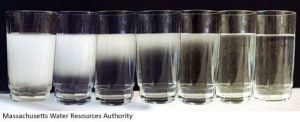As a result of the Walkerton Inquiry and the proclamation of section 33 of the Safe Drinking Water Act, the Ministry of the Environment requires that all municipal residential drinking water systems operating authorities be accredited through the new Municipal Drinking Water Licensing Program.
The requirements for issuance of a license are:
- A drinking water works permit (replacing a Certificate of Approval)
- A permit to take water (currently in place)
- An approved Operational plan
- An accredited operating authority
- An approved Financial plan (submitted 6 months after license is obtained)
To become an accredited Operator, Norfolk County’s Public Works and Environmental Services Department was required to submit applications for Drinking Water Works Permits, Licenses, and Operational Plans for each of the five municipal drinking water systems operated by the County by May 1, 2009.
The Ministry of the Environment reviewed and accredited the operational plans by a third-party accreditation body, the Canadian General Standards Board. A Certificate of Accreditation was issued on February 17, 2010.
The accreditation was based on the operating authority's quality management system, which meets the drinking water quality management standard requirements. The Operational Plans describe how the requirements of the Quality Management Standard are achieved.
The accreditation body reviewed the submitted operational plans and performed system audits. It will also perform on-site verification audits to verify conformance to the drinking water quality management system.
A Quality Management System can be defined as the policy and associated organizational structures, procedures, responsibilities and evaluation measures that ensure the capability of delivering a product to specific standards. Modern industry use of Quality Management Systems has steadily increased over the last 30 years since the development of the first ISO standard in 1986.
Whether implemented voluntarily or as a requirement of suppliers to large manufacturers, Quality Management Systems have repeatedly proven beneficial in terms of accountability, quality control, efficiency and productivity.
The purpose of the quality management approach in drinking water is to protect public health by achieving consistent good practices in the management and operation of a water system.
The Drinking Water Quality Management System approach emphasizes the importance of:
- A proactive or preventative approach rather than reactive management strategies to identify and manage risks to public health
- The establishment and documentation of management procedures
- Conformance to these procedures
- Continuous improvement of the quality management system





